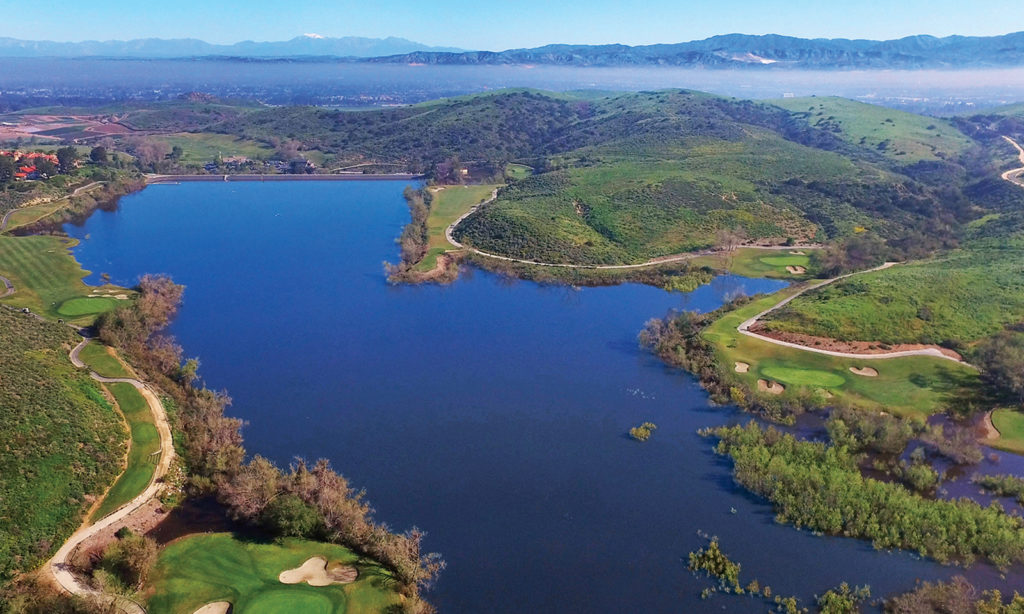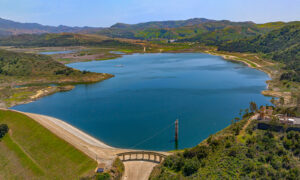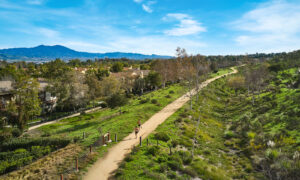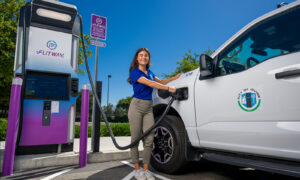
As California experiences continued drought, there’s one thing that sets Irvine apart: water resilience.
It’s a result of early planning and continual investment in diverse strategies that help Irvine Ranch Water District prepare for drought better than other areas.
“Water is like financial planning,” says Fiona Sanchez, director of water resources for IRWD. “You never want all your eggs in one basket. You need to diversify.”
That strategy has paid dividends since IRWD’s earliest days, especially as imported water – supplies that come from Northern California or the Colorado River – has become increasingly expensive and susceptible to disruptions.
Pioneers of recycled water
IRWD’s Michelson and Los Alisos water recycling plants make up one of the nation’s most robust recycled water systems – one that includes 570 miles of pipeline and four storage reservoirs (like Sand Canyon, pictured above) and serves 27% of the area’s water needs.
Though they were among the first municipal-scale recycling plants in the country, Michelson and Los Alisos started out small, serving mostly agricultural irrigation needs in the late 1960s.
Yet Irvine’s water pioneers knew they had something special.
“We started laying recycled water pipes in 1967, long before we had a critical mass of supply or demand,” Sanchez says. “That early decision made all the difference. Without it, expanding the recycled water system to serve the future city would have likely been cost-prohibitive.”
Today, Michelson has the capacity to treat up to 10.2 billion gallons per year. That would free up enough drinking water to serve the needs of approximately 350,000 residents a year.
Water beneath residents’ feet
Recycled water isn’t the only arrow in the quiver. IRWD also draws from local groundwater sources, most of which provide very high-quality water.
Decades ago, a rich groundwater source in Irvine was discovered to be too brackish to drink or irrigate landscapes. So IRWD launched the Irvine Desalter Project in the early 2000s.
The Irvine Desalter Project has grown to generate about 1.6 billion gallons of water each year, enough to serve about 56,000 Irvine residents. The process provides high-quality water for indoor and outdoor uses.
“Water is like financial planning. You never want all your eggs in one basket. You need to diversify.” – Fiona Sanchez, Irvine Ranch Water District
Investment in water banking
A more recent piece of the water diversification puzzle involves land and water hundreds of miles away in California’s Central Valley.
It’s called “water banking” and captures water that would otherwise be lost to the ocean.
“The idea is relatively simple,” Sanchez says. “We construct water banks to capture and store water for when we need it.”
It’s a lot of water, too. The district’s goal is to have three years of potable water banked to meet the area’s needs and be ready to use in case of extreme drought or emergencies.
Lower costs and benefits for residents
It turns out that investing in diverse supplies also lowers costs for residents. In fact, IRWD has among the lowest rates in Orange County, according to Sanchez. That, coupled with the security and safety of a resilient water supply, bodes well for Irvine’s water future.









